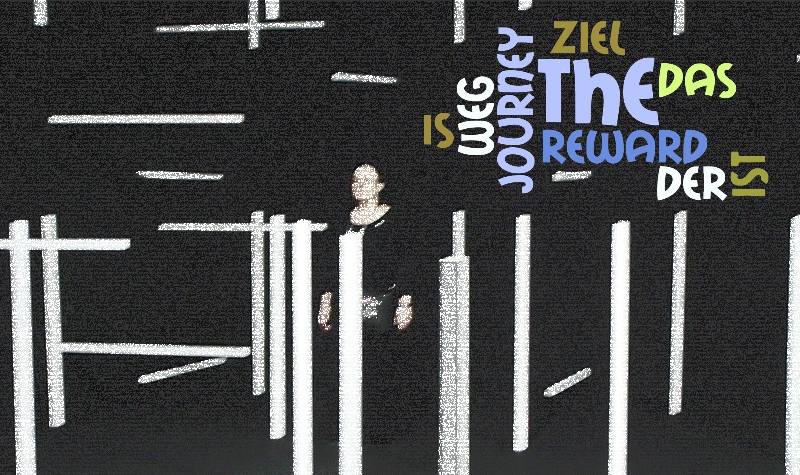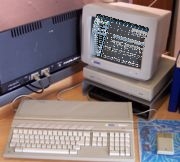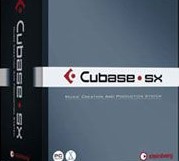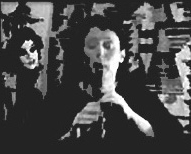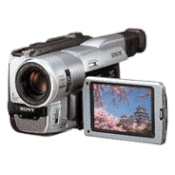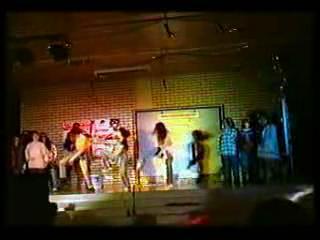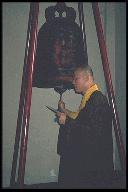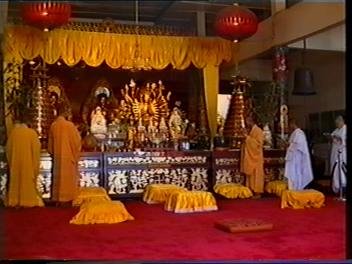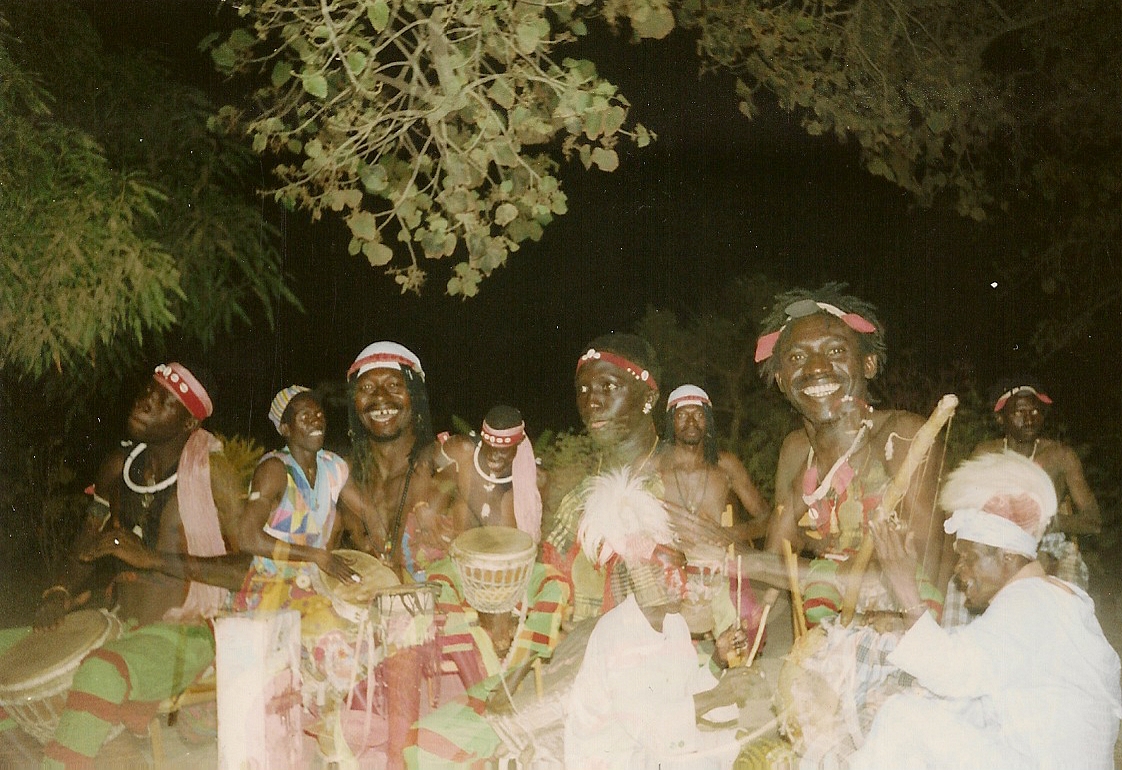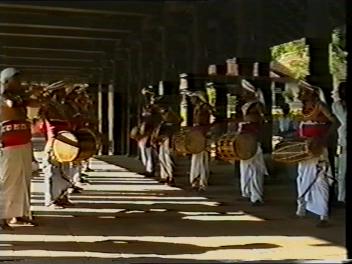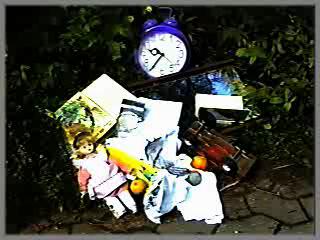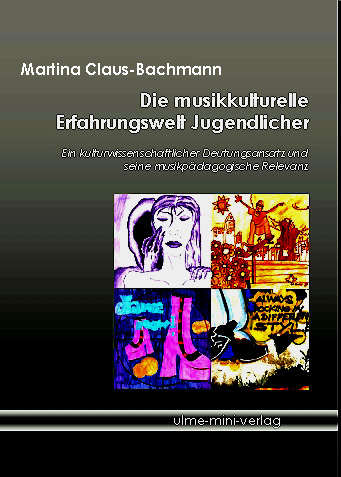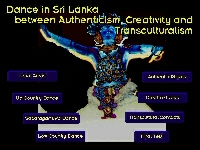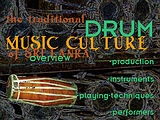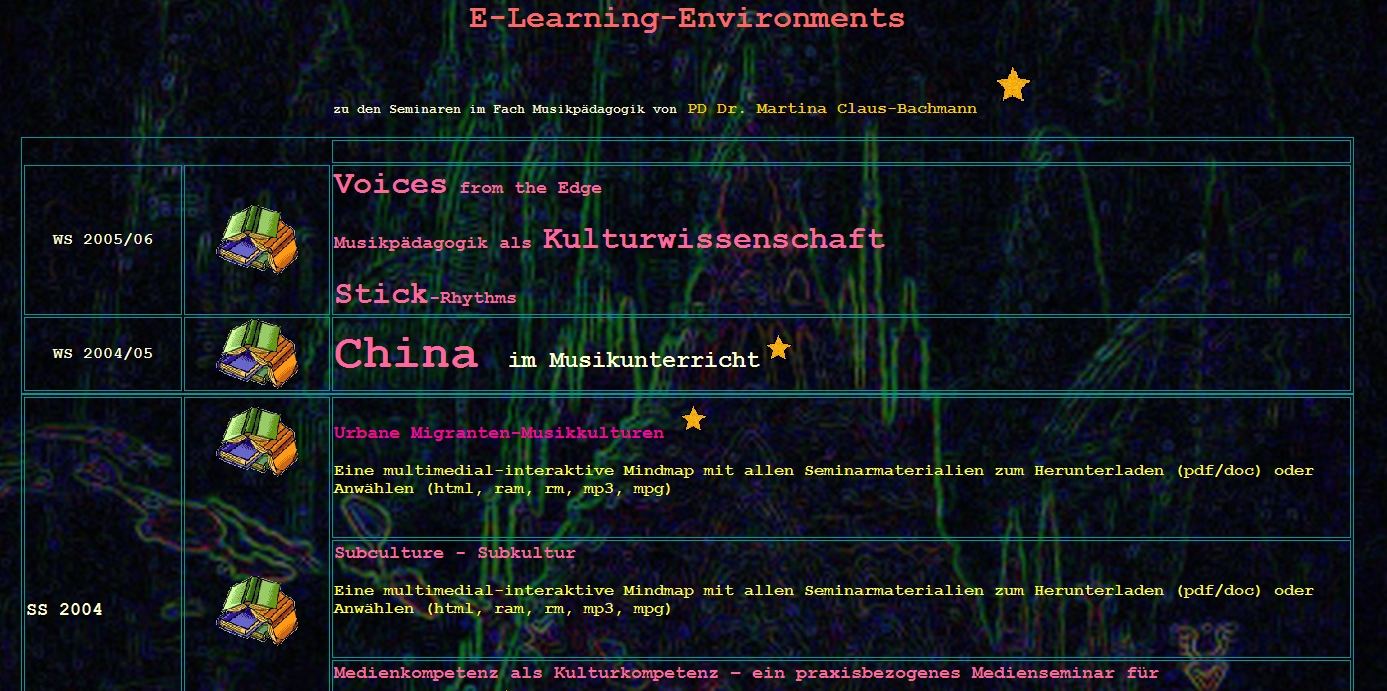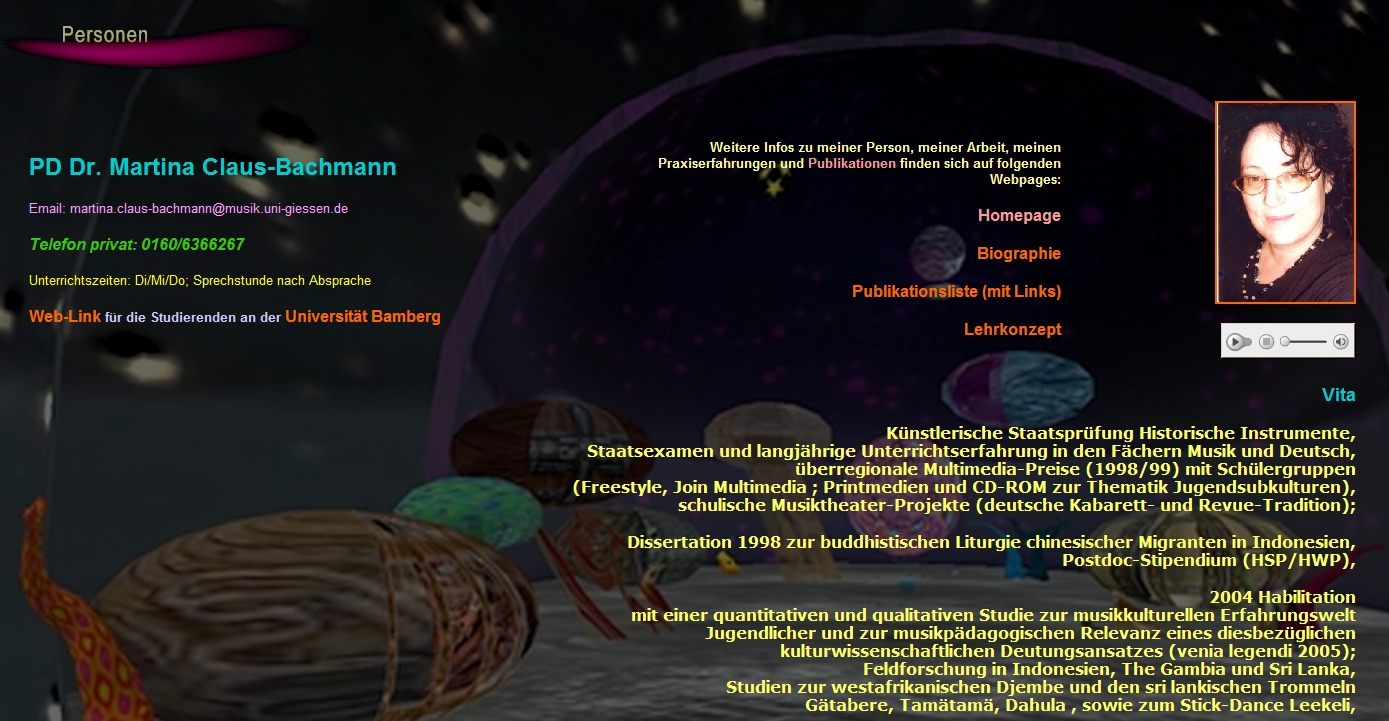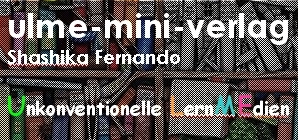Translate this page:
|
The Journey is the Reward or LifeLongLearning
eLearning-
and Media-Experiences of PD Dr. Martina Claus-Bachmann
|
||
|
Atari Studio The German PC magazine
CHIP published in one of its recent editions a review of the last
30 years of development in the computer area. The need to establish
a research- and a lecture concept for Media and Learning can be seen
as the result of my and others' life experience as musicians and music
researchers, educationalists and (ethno)musicologists, intensively
and basically grown on and related to this development of the digital
possibilities and the virtual worlds of our postmodern environment.
After taking the first autodidactic steps into the digital world I soon obtained a home music studio, where I could produce my own playbacks, arrangements and compositions. With the sequencer technique of Cubase I could play as many tracks as I wanted, myself and in my own style and interpretation, I could choose the instrumentation on my Roland U20, which I upgraded step by step with new high quality instrumental sound samples on additional flash-cards. Even though the U20 had only 6 sounds playing at the same time, it was fun to create all using the background of one’s own experience and taste. The example on the right is one of these Atari arrangements as an accompaniment for a solo-recorder (1993)... |
||
|
Playback-Arrangements
and Audio-Presentations for School-Purposes
At that time I used to work as a music teacher at a public school and started to produce playback arrangements for different educational situations, like musical performances, instrumental groups, classroom activities, etc. With a click on the pictures you will find two examples for productions … |
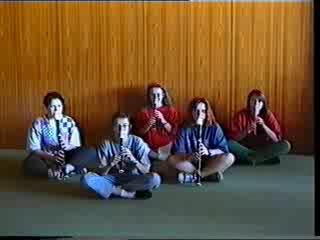 |
|
|
Field
Research and Media Competence
In 1997 I started to write my ethnographic thesis "Mahayana-Buddhist Liturgy in Contemporary Indonesia - Musiccultural Tradition of Chinese Migrants" on my Atari. But in this year the PC became so attractive, that I decided to change and I bought a system, which was also able to process video files - very expensive at that time and one of the first with a video card in the town, where I lived. But now I was also able to create video and audio versions of my field research material, which I had collected in Indonesia in the years 1993 and 1994. You can see two examples from the place of my fieldwork: Vihara Aryamularama in the Puncak area, Cipanas/Pacet, West-Java: ChiSouLi - Praise during the Ullambana-Festival of the Chinese Mahayana-Buddhist monastry... |
||
|
Video-Recording
and Ethnographic Research
From that time I was also well equipped with a video-camera during my field-research and recorded everything around me as long as the battery or the electricity worked. I used to cut the videos with Premiere (capturing with a Miro video-card). Here a video example from a shorter stay in Gambia, West-Africa, introducing the tama, the talking drum and of the temple drummers of the Dalada Maligawa in Kandy, Sri Lanka: |
||
|
Video-Production
in the Classroom
Also for school projects the video camera was used intensively. A first great experience was a contest among 12 classes of the school, each of them producing a video clip on the basis of a favourite song of rock /pop music of different origin in Europe. The audience voted for the best one and the winning class was allowed to do an excursion for one day (picture on the left: Shadow on the Wall by Mike Oldfield and the class 7b). Another production was a video clip in a German-language class concerning the grammatical use of the article at last also for migrant kids, for whom the article is mostly a heavy challenge in learning the German language properly, on the background of the topic of environmental protection (picture on the right)... |
||
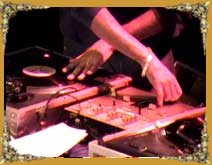 |
CD-ROM
as a Medium for Cultural Expression
In 1998 I started to produce CD-ROMs with the authoring software Astound. Extremely fascinating for me was the possibility of integrating in one combined production-project files for all senses, texts, pictures, audio and video files. The second important point was the interactivity, which gave the projects a mediating, didactic structure and touch. A bigger project was a participation of a student team group at school in the Germany wide competition 'Join Multimedia' of the Siemens company. The software used was a modified version of Toolbook Instructor and the group became 3rd place winner (4000.- EU) in category 1 in 1999 with the topic Identity in a field of 885 competing schools. The topic also became the guideline for my postdoctoral research project. Here you can see the storybook of the production Identity... |
 |
|
Media Production, Research and Presentation of the Results After finishing my thesis in 1998 I got a postdoctoral scholarship to prepare my postdoctoral thesis concerning the cultural identity of young people and the educational implications of the result. Methodologically I enriched the ethnographic approach with an ethnomethodological quantitative and qualitative analysis; in the 3rd chapter a multimedia strategy is developed as a mediating method for groups or classes in schools, based on the didactic method of learning on stations, but here with the eLearning content of CD-ROMs (station material for the HipHop, Techno and Metal Culture is included in the book publication on a CD-ROM)... According to the
main finding of the qualitative and quantitative analysis, subcultures
are seen as holistic cultural systems with a specific supply of borderline
markers to guarantee the identity-construction of their followers.
They show all the structures (visual, sonic, kinetic, textual and
performative as well as spiritual borderline markers) and the strategies
of cultural systems to grow, enter and preserve a stable status and
to enter a zone of decline or transformation with the tendency to
open the system for hybrid connections with cultural forms
of expressions of other cultural systems... |
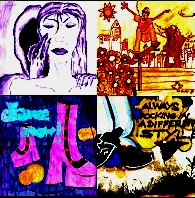 |
|
|
CD-ROM-Production
in Sri Lanka
One year of my 2 years and 9 months scholarship I spent in Sri Lanka as a Visiting Scholar of the former Institute of Aesthetic Studies/University of Kelaniya, now independent University of Visual and Performative Arts in Colombo. Besides writing and preparing my Habilitation book I got the chance to continue my field research in Sri Lanka and the wish of the Director of the Institute, Prof. Dr. Carlo Fonseka, at that time was, to get a production of a CD-ROM concerning the topic of Dance in Sri Lanka. This production and an additional CD-ROM about the Drum Music Culture in Sri Lanka was produced in the years 2000/01. Take a look at the storybook behind or read an article published in a Chinese publication following a conference in Beijing on the topic 'eLearning' organised by ASEF. |
||
|
eLearning Lectures in the Teacher-Education at the University From 2002 to 2008 I taught as a lecturer at the Institute for Musicology and MusicEducation of the University of Giessen. From the beginning one of my main focuses was to develop eLearning lectures, environments and activities based on my former experiences as music teacher, educator and music researcher and ethnomusicologist in the "field". |
||
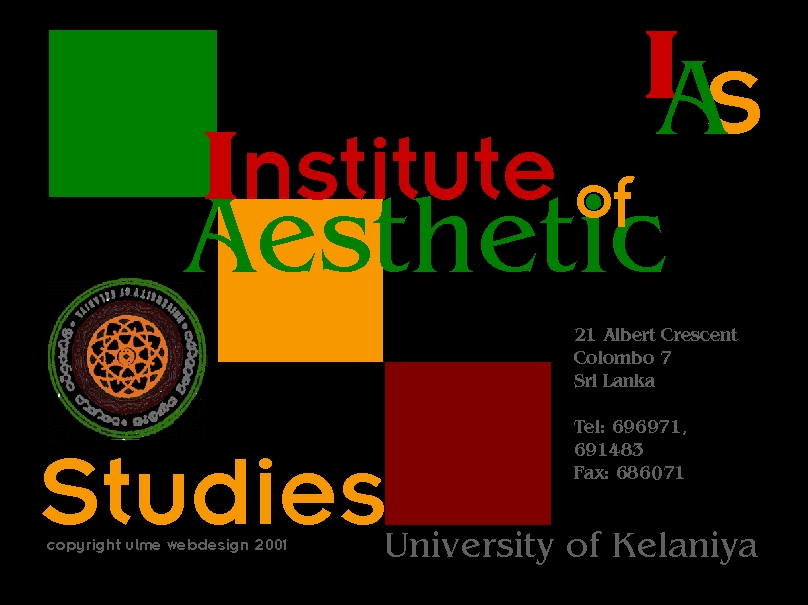 |
Experiences as a Webmaster During my longterm stay in Sri Lanka I also had the task to provide a website for the Institute in Colombo and from 2002 to 2008 I was the webmaster of the ICTM as well as for the Website of the MusicInstitute of the University of Giessen (until 2006). The authoring software Astound offered - similar to PowerPoint - an option to transfer a CD-ROM production to a webpage including all animations, but then only useable for Internet Explorer and not for other browsers. Therefore I decided to work mainly with Dreamweaver, a common web software, which covers the requirements of all systems. |
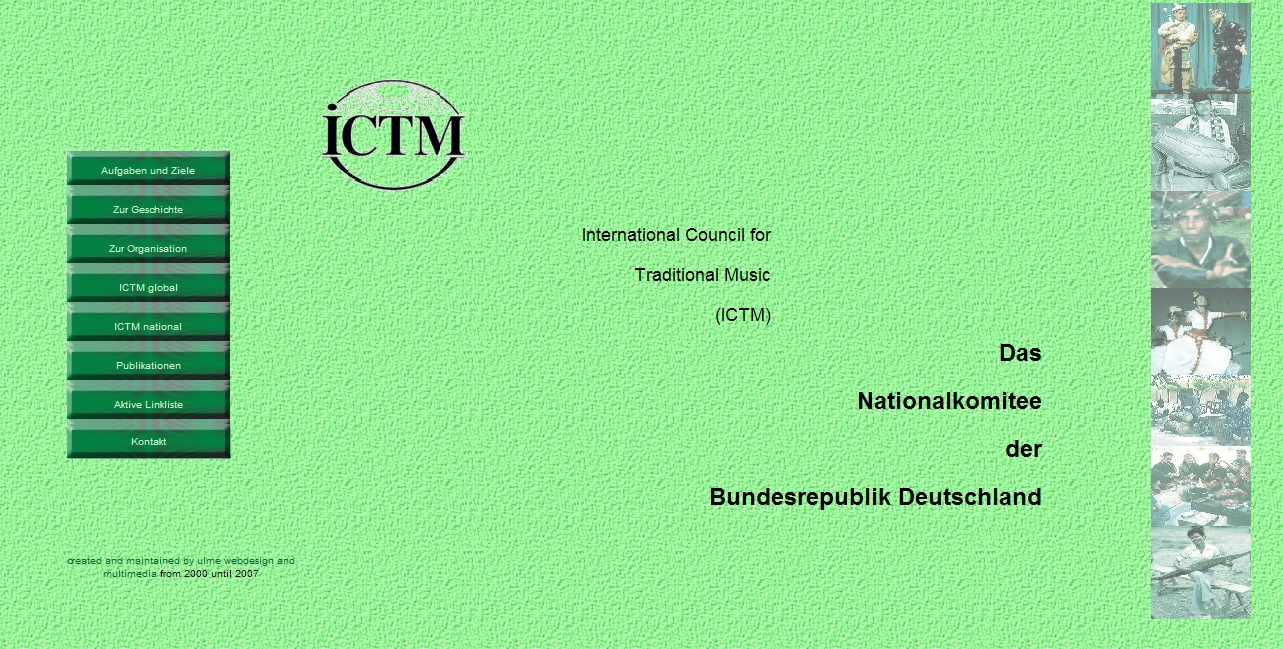 |
|
My main contribution to music research and eLearning is without any doubt the development of the idea since the year 2001. This project has been presented at international conferences as well as at the eLearning-presentations of the University of Giessen. It provides a system with an open structure, which can be modified at any time and requires the cooperation of research partners and (web-) authors all over the world. The main goal is to offer descriptions based on observations of music cultural systems, of the great variety of shaping the world in a mental, cultural way. This can be seen as the basis for all multicultural, intercultural and transcultural understanding and education. A basic introduction covering the needs of the researcher in the field, of the academic author during the process of presentation and publishing and of the educator with a pool of methods for his/her individual situation is the following publication: |
||
|
Publishing Company ulme-mini-verlag - the concept of media combinations Publishing, Editing, Printmedia and Media-Combinations Together with my partner Shashika Fernando the next step was the foundation of a publishing company for the distribution of our media combinations. The name was an association: ULME is a tree in the German language and paper is made from trees; U=unconventional, L=Learning, ME=Media. Focusing first on the self-publication of my academic work, we try to extend the program to the field of children books and fiction, lyric poetry if possible bi-lingual. In the last year we have developed our special small booklets in a handbag or pocket format + CD-ROM for easy use and transport with a laptop. |
||
|
Media Research and Presentation in the Virtuality Some of the recently published volumes cooperate with content and/or layout from the 3D-environment Second Life, where we conduct several inworld-shops with links to real life webpages with order option, where we organise culture workshops, exhibitions and other events to get and stay in contact with potential artists, translators, writers and researchers. These extensions into the 3D-world we see as a great chance and fruitful development for all future activities, especially also because it gives us the independence to work all around the world without being restricted to a particular real world place. To fulfil all the requirements we started to build the hardware ourselves too (transportable shuttle-computer)... |
||
